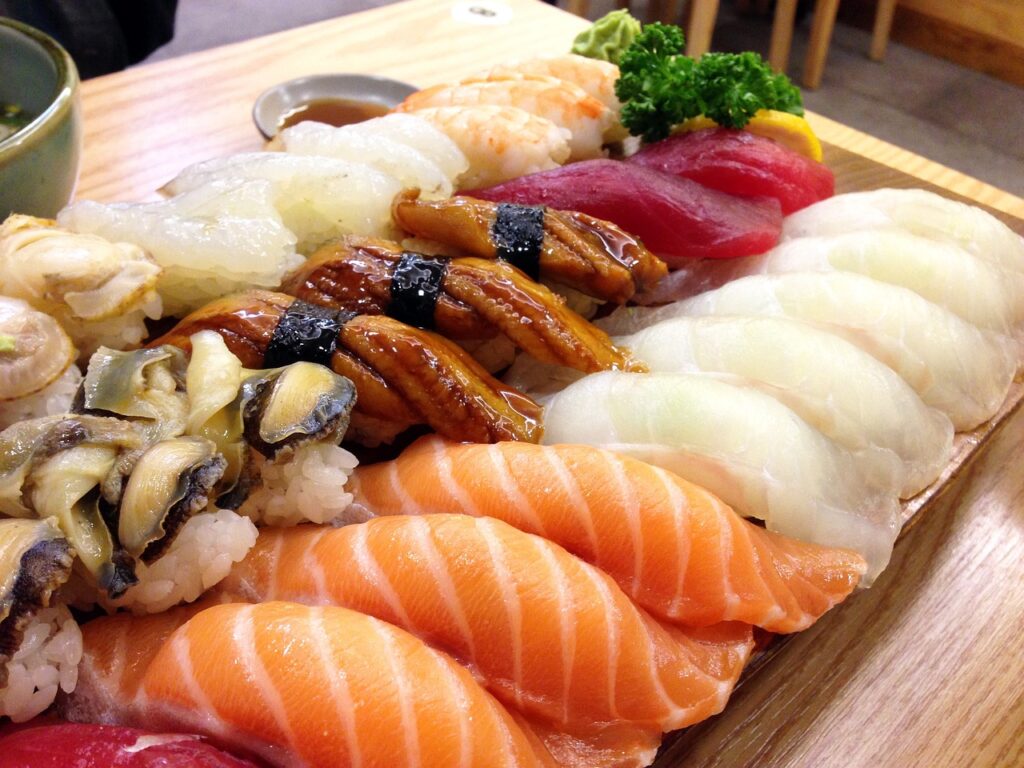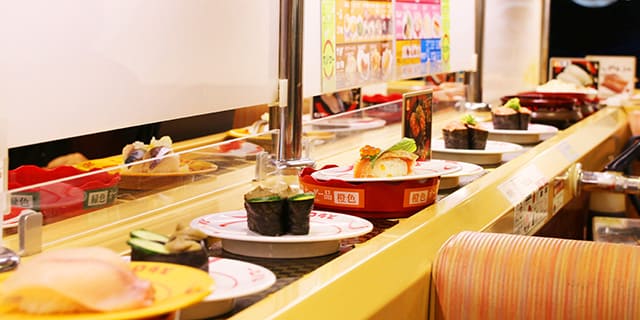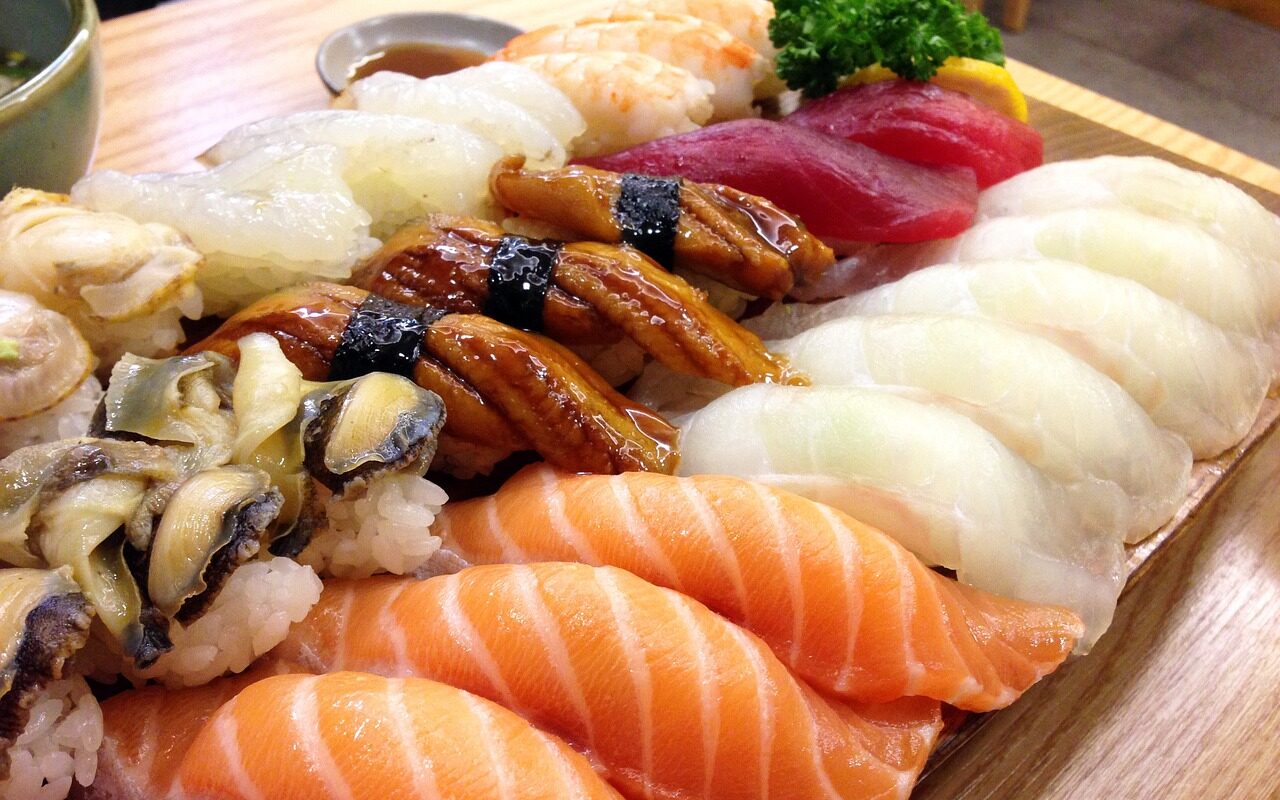Chapter 1: Introduction to Sushi
I would like to introduce sushi, a cherished meal in Japan, as I believe many people may not be familiar with it. Sushi is a beloved dish worldwide and is one of Japan’s iconic cuisines. Its origins can be traced back to an ancient method of preserving fish in salt and rice. This fermented fish eventually evolved into the prototype of sushi.
The charm of sushi lies in its simplicity. It is primarily made by placing various ingredients, known as “neta,” on top of vinegared rice. The freshness of the ingredients is crucial. First and foremost is “shari,” which is the vinegared rice. The quality of this rice significantly influences the deliciousness of sushi. It is made by mixing rice with vinegar, sugar, and salt to season it.
Neta mainly consists of seafood, and there is a wide variety available. Tuna, salmon, shrimp, squid, sea urchin, and more, all reflecting the seasons in Japan, are abundantly used. Furthermore, depending on the season, fresh ingredients appear in the market, making sushi enjoyed during its peak season exceptionally delicious.
There are several styles of sushi. The most common is “nigiri sushi,” where the neta, such as fish or shrimp, is placed on top of shari and molded by hand. Additionally, “maki sushi” involves rolling shari and neta in seaweed, offering a convenient way to enjoy sushi. There are other variations like “oshizushi,” “chirashizushi,” and “inarizushi,” providing diverse options to savor sushi.
One of the pleasures of eating sushi is experiencing its freshness. With each bite, you can savor the oceanic flavors and the richness of the ingredients. Especially in sushi restaurants in Japan, where sushi is made using freshly caught fish of the day, the taste is exceptional.
Furthermore, sushi is deeply intertwined with Japan’s traditional food culture, with a rich history and many stories. It has been documented in eras like the Heian period and Edo period and has evolved over time to its modern style.
In this way, sushi is a meal closely connected to Japan’s cultural heritage. It is simple yet profound, and I hope you can appreciate its allure.

Chapter 2: Historical and Cultural Background
Let me explain how sushi has evolved in Japan through its history and culture.
The origins of sushi date back to ancient times. Initially, sushi was born as a method of preserving fish by fermenting it with salt and rice. This method was particularly important in the temperate climate of Japan to keep fish fresh. This fermented fish dish was known as “narezushi” and was used in various regions of Japan.
During the Heian period, narezushi evolved, and the process of fermenting fish and rice was shortened. It was around this time that non-fish ingredients began to be used.
A significant transformation occurred during the Edo period. Edo, which is present-day Tokyo, had developed into a major city. In a bustling city where many people lived, there was a demand for convenient meals. This led to the creation of a style where rice seasoned with vinegar, known as “su-meshi,” was used as a base, and fish was placed on top. This style became known as “Edomae sushi” and laid the foundation for modern sushi.
During the Edo period, sushi shops were scattered throughout the city, and sushi became a popular part of people’s daily lives. Sushi chefs competed to improve their skills, leading to a significant improvement in the quality of sushi.
As Japan entered the Meiji era, it began to adopt Western influences, and sushi also underwent further evolution. New ingredients and seasonings were introduced, resulting in a wide variety of sushi styles.
In the latter half of the 20th century, sushi gained popularity outside Japan. The sushi boom in the United States and Europe, in particular, has been significant, and its popularity continues to grow worldwide.
In this way, sushi has a long history and has evolved into its modern form. Throughout its history, it has adapted to changes in Japan’s culture, environment, and society. Even through sushi alone, you can experience the depth of Japan’s history and culture.
Chapter 3: Sushi in the Modern Era
Let me introduce what sushi is like in modern-day Japan.
Sushi has gone through various transitions, from being a traditional Japanese food culture to becoming a diverse trend in contemporary dining. Sushi, once considered a luxury meal, is now enjoyed in various forms on many people’s tables.
One of the most common ways to enjoy sushi is at conveyor belt sushi restaurants. This style, which began in the 1980s, became incredibly popular as it allowed people to easily enjoy a variety of sushi types. With advancements in technology, these restaurants now feature touch-screen ordering systems and automatic delivery systems, providing a convenient and enjoyable dining experience.
On the other hand, traditional high-end sushi restaurants, especially those offering Edomae sushi, still thrive. Here, you can witness sushi chefs carefully crafting each piece in front of you. The quality of the ingredients, the freshness of the fish, and the ambiance make these dining experiences exceptional.
Moreover, modern sushi incorporates international elements. Sushi varieties born outside of Japan, such as California rolls and spicy tuna rolls, are readily available in Japanese restaurants and convenience stores. This reflects the global popularity of sushi and its influence on Japan’s culinary landscape.
Sushi can be enjoyed in various ways, including sushi parties at home, dining out with friends, and business gatherings. Seeking seasonal, fresh ingredients at sushi restaurants, according to the time of year, is a delightful way to experience Japan’s food culture.
In contemporary Japan, traditional sushi culture and modern trends coexist, allowing people to enjoy sushi in diverse ways. The background of sushi encompasses Japan’s history, culture, and the lives of its people, creating a unique landscape that can be deeply appreciated.

Chapter 4: Notable Works Featuring Sushi
I will now introduce notable works that have featured sushi.
“Sushi,” representing Japanese food culture, has been the subject of many films, books, television programs, and other media. Through these works, the profound charm of sushi and the passion and philosophy of those who support it are conveyed.
In the world of film, “Jiro Dreams of Sushi” cannot be overlooked. Released in 2011, this documentary film follows the life, philosophy, and exquisite sushi of Jiro Ono, the master of the three-Michelin-starred sushi restaurant “Sukiyabashi Jiro” in Tokyo’s Ginza district. The film portrays the rigorous training of sushi artisans, their passion for sushi, and their deep respect for ingredients like fish and shari. Many viewers have watched this film and gained a renewed appreciation for the depth of sushi culture.
In the realm of literature, Trevor Corson’s “The Story of Sushi” stands out. This book serves as an encyclopedia of sushi, covering its history, culture, types, ingredients, and even the correct way to enjoy it. Readers can gain a deeper understanding of the world of sushi by delving into this comprehensive resource.
In television, there have been numerous programs and features dedicated to sushi. Particularly in Japanese gourmet shows, they often explore the behind-the-scenes aspects of sushi restaurants, the skills of sushi chefs, and the seasonal ingredients and unique food cultures in various regions. These programs introduce viewers to new facets of the sushi world and its allure.
In this way, sushi has been conveyed through various media, allowing us to understand its charm and the culture and philosophy behind it. These works provide valuable insights and new perspectives for those interested in exploring the world of sushi. We can expect more creations centered around sushi in the future, offering us the joy of delving deeper into this unique culinary culture.
Chapter 5: Conclusion
In conclusion, sushi, as a representative of Japanese food culture, has been cherished by people for centuries. Despite its deceptively simple appearance, it possesses a depth and richness that continues to captivate many. Through this article, we have explored the history of sushi, its cultural background, its contemporary forms, and the works that have featured it.
By tracing the history of sushi, we can understand its development and evolution over time. What was once primarily a preservation method has transformed into a luxurious delicacy enjoyed by gourmets worldwide. Behind the techniques and methods lies the passion and philosophy of sushi artisans, as well as their deep respect for seasonal ingredients.
When we look at modern sushi, we see a wide variety of styles and forms, from traditional Edomae sushi to popular conveyor belt sushi. This diversity reflects the universal appeal of sushi, which has captured the hearts of many.
Moreover, sushi has been a subject of fascination in various media, from documentaries to books and television programs. Through these works, we gain a deeper appreciation for the profound allure of sushi and the cultural and philosophical elements that underlie it.
In closing, sushi is more than just a meal; it is a reflection of Japan’s history, culture, and the dedication of its artisans. I hope that through this article, you have gained a renewed understanding of the deep charm of sushi and the many facets of this culinary treasure.
